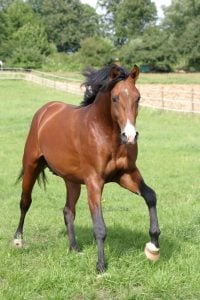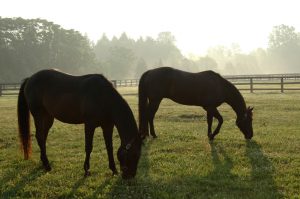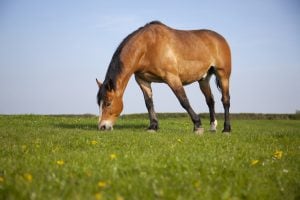You give your horse the best possible care, writes CAROLYN HENDERSON.
You make sure that his diet is spot on, that he’s fit for the job physically and mentally – and then he sidelines himself fooling around in the field. We’ve all been there, which is why we can all sympathise with Danish dressage rider Agnete Kirk Thingaard.
Last week, Agnete announced that her lovely mare Atterupgaards Orthilia – who helped Britain win team silver at the Rio Olympics when ridden by her previous owner, Fiona Bigwood – was out of action for the summer because of an injury sustained in the field. It’s a shame dressage doesn’t include a mark for horsemanship. If it did, Agnete deserves a perfect ten for sticking to the principle that, in her own words, horses should be allowed to be horses.
Many years ago, a successful dressage rider told me that one of the yard’s top horses was about to have a holiday. “I bet he’ll enjoy his time in the field,” I said. There was a shocked silence, before said dressage rider announced in scandalised tones that of course the horse wouldn’t be turned out. He was much too valuable for that: instead, he’d be moved to the largest box on the yard and led out in hand twice a day. That sort of regime is, hopefully, rare. There are still some racing yards where horses spend 23 hours out of 24 in a stable, but there are also trainers who make sure their horses go out and get their heads down every day.
It isn’t just that horses are natural grazing animals with a psychological need to chew, unless health issues mean vet-prescribed box rest, they need to go out every day to relax – when did you last see a horse weave in the field?
Turnout time also provides numerous nutritional and health benefits, as Nutritionist, Olivia Colton MSc from Feedmark explains; “a constant supply of forage, such as turnout on a grassy paddock, is more suited to their digestive systems, being trickle feeders. Unlike humans, the horse’s stomach continually secretes acid, so if there is limited fibre to buffer the acid produced it can lead to digestive issues. The ability to be more mobile in the field as opposed to a stable is also beneficial for the musculoskeletal system, helping to relieve stiffness.”
Some people advocate a 24/7 outdoor lifestyle for every horse, but not every horse agrees – at least, not the ones I’ve known. For every horse who prefers to stay out at night in the wind and rain, there will be one waiting at the gate ready to come in. And yes, you can have too much of a good thing. There are plenty of tactics for reducing the intake of horses and ponies who get fat at the sight of a blade of grass, although I’m still waiting for someone to design a grazing muzzle that my cob can’t wriggle out of. Any equine is an accident on four legs waiting to happen. All we can do is minimise the risks, keep our fingers crossed and accept that by letting our horses be horses, we’re doing the best for them.




